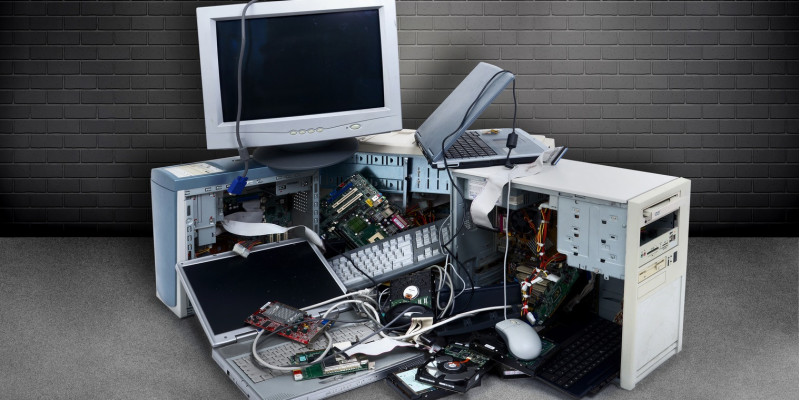The “International E-Waste Day” (#ewasteday), which is now in its sixth year, raises awareness of the issue of e-waste and draws attention to problems worldwide. The day of action on 14 October was launched by an international initiative, the WEEE Forum. This year, under the motto “You can recycle anything with a plug, battery or cable!”, “invisible” and “atypical” electrical appliances in particular are being targeted.
For some years now, there has been an increasing trend to equip furniture, (smart) clothing, toys, lifestyle products or (smart) building equipment for indoor and outdoor use with additional electrical functions, such as lighting, sound, sensor or charging functions, as well as functions that can be controlled via app or Bluetooth. Due to their permanently integrated electrical function, these products become electrical appliances that are to be disposed of separately at the recycling centre or in retail outlets.
They are called “atypical” or “nvisible” because they have an atypical or unusual appearance, design or material composition for electrical or electronic equipment. In some cases, the electronic functions are hidden and, unlike “classic” electrical appliances, are difficult for consumers to recognise as such. Nevertheless, they also contain valuable raw materials such as gold, silver or copper as well as hazardous components and substances such as lead, flame retardants or lithium batteries.
Other examples are electromechanical sports equipment and furniture, “smart” sportswear, electrically operated roller shutters, door openers, smart thermostats, illuminated or smart mirrors, power-generating blinds, LED or sensor-equipped floor coverings, wireless headphones and their charging covers, remote controls, watches – in fact anything with a plug, battery or cable. Due to these distinctive features, disposal problems sometimes arise, so that such “invisible” or “atypical” devices are disposed of incorrectly – for example in residual or bulky waste, in used textile containers, in construction waste or metal scrap.” As a result, raw materials are lost because valuable substances and materials are only recovered for energy instead of being recycled.
YouTubeWith the recently launched Plan E campaign “Dispose of your e-scrap properly – it's magic!”, the magician duo Siegfried & Joy are now also providing information on the topic – via Instagram, Youtube, Twitter, Facebook and in TV commercials. The nationwide information campaign, which is also supported by the German Environment Agency (UBA), has been providing a website since as early as 2019, with lots of tips on how to dispose of old electrical appliances properly, as well as download and communication materials for everyone and, more recently, also for children and teachers.
By regularly raising awareness and informing consumers through many different channels, the Plan E campaign also aims to help ensure that more and more WEEE is recycled correctly in order to recover raw materials and thus protect the environment and climate.
This is because while the volume of new electrical appliances put on the market continued to rise in 2022 to 3.26 million tonnes – an increase of 130,000 tonnes compared to the previous year and as much as 850,000 tonnes compared to 2018 – the volume of old appliances collected fell by 30,000 tonnes compared to the previous year to just over one million tonnes. The low collection volumes and the collection rate of 38.6 per cent are an indication that too many old appliances are still being disposed of incorrectly or are being hoarded in households. A positive aspect is the continued high recovery and recycling rates. For example, 97.7 percent of the collected WEEE was recovered and 87.6 percent was prepared for reuse and recycled.
 Click to enlarge
Click to enlarge
